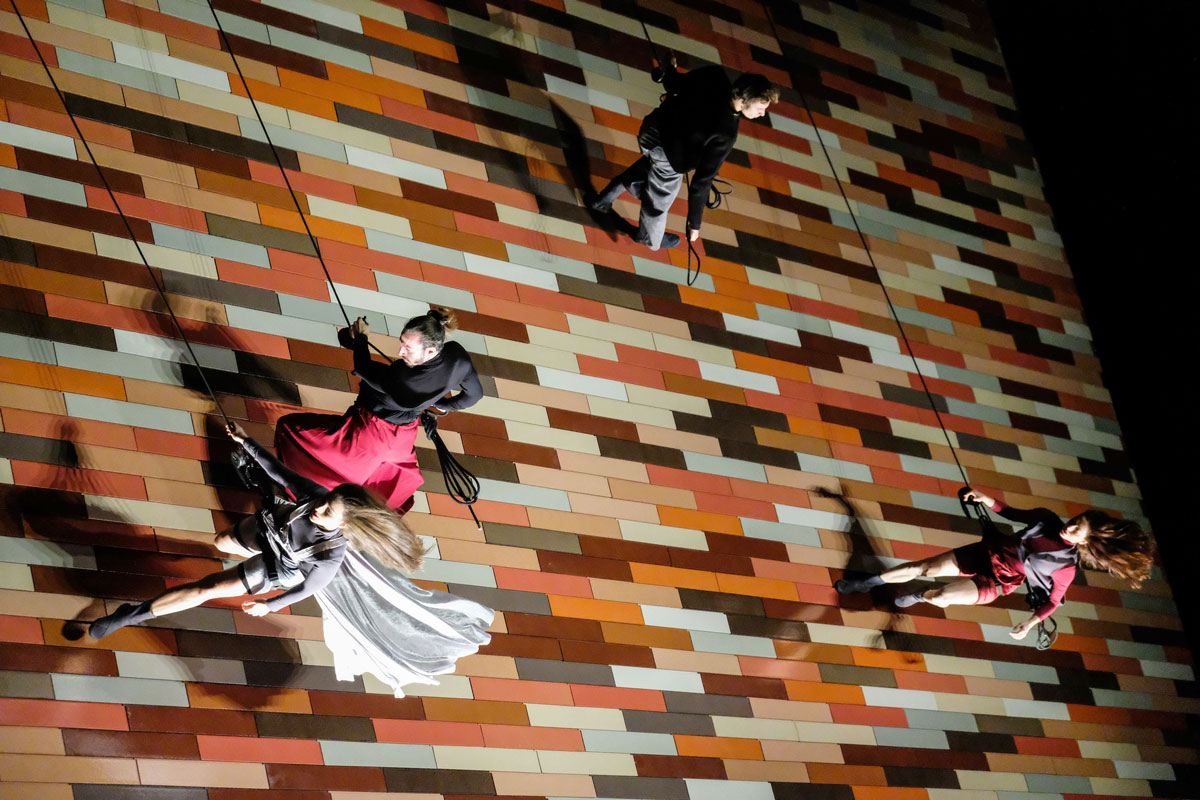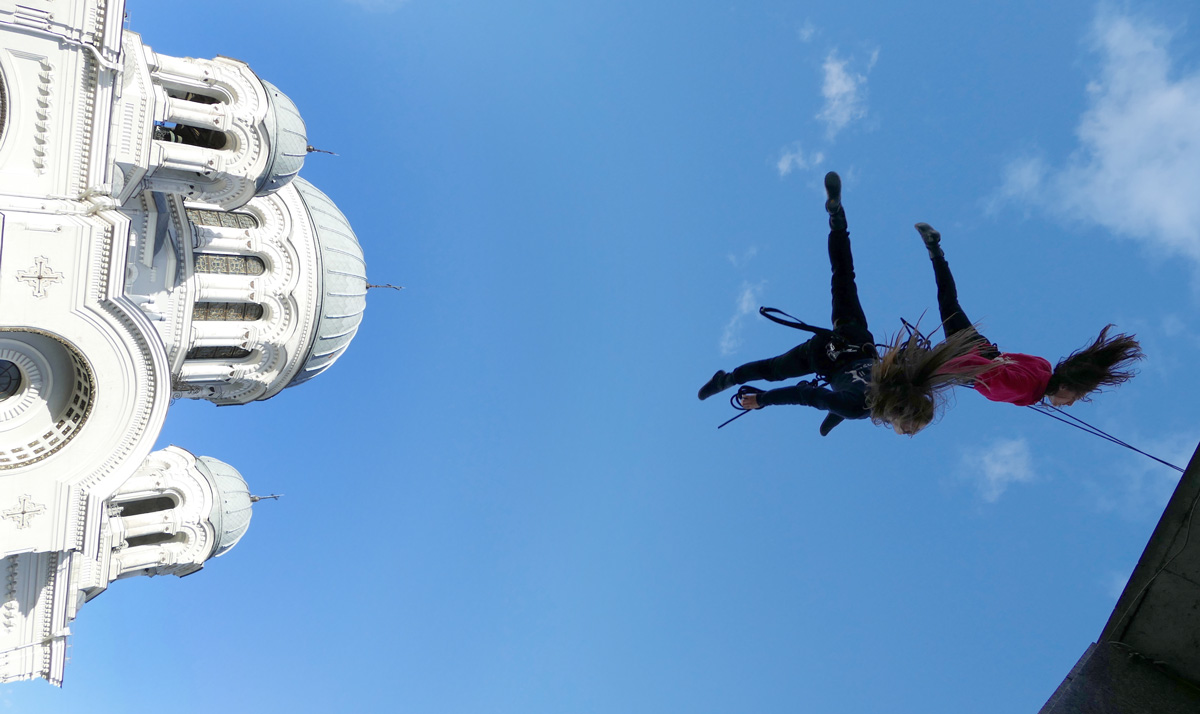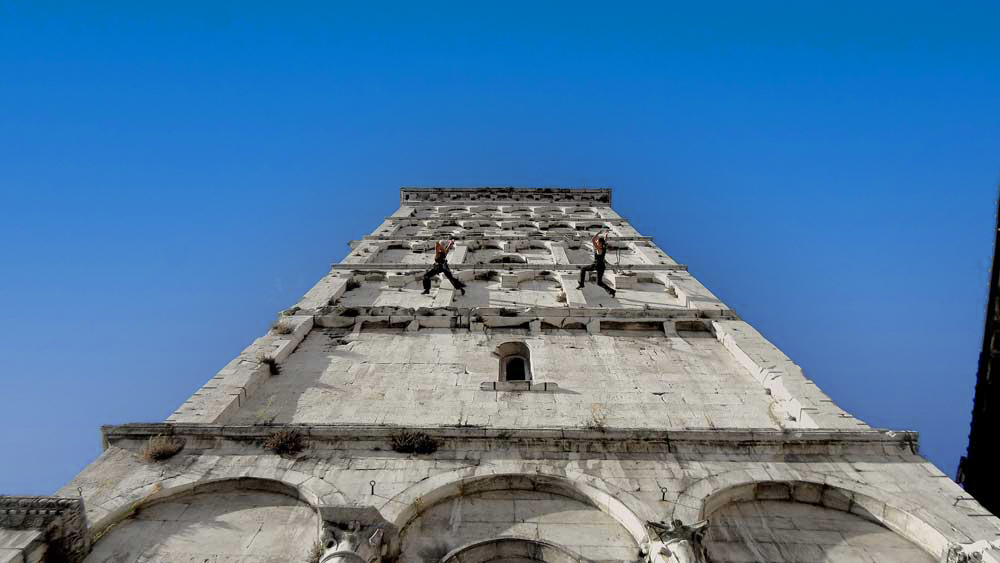
Talking about architecture also means talking about bodies in space. Solid and geometric bodies but also human bodies, capable of giving new form to places. After all, as theorized by Rudolf Laban, one of the most important choreographers of the 1900s, movement is a living architecture, created by human gestures and made up of paths that outline the forms that are present in space (Choreographie, 1926).
Re-reading architectural space through dance
According to Laban, movement is based on a spatial coordinate system. Its transversal knowledge leads to a work that sees bodies as protagonists, inscribed in Platonic solids. In this way he theorized a system for creating movement, and his work has become a point of reference that led to the birth of creative and contemporary dance. One of his most important contributions is his complex theory of space expressed in two writings: Choreographie (1926) and Choreutics, published in London in 1966.
Wanda Moretti, choreographer at Compagnia Il Posto Danza Verticale, was most likely inspired by Rudolf Laban and developed an art form now called vertical dance. In this artistic expression, performers dance on vertical architectures and planes: the surface of the buildings becomes the stage on which they move, giving life to a relationship between bodies and space.

Il Posto Danza Verticale Votive Temple of Peace © Wanda Moretti
Since its inception in 1994, Compagnia Il Posto has focused its creations precisely on the possibility of relating bodies to cities, where architecture itself becomes a witness to history and to the changes that occur over time. Dancers become mediators of places and urban spaces through performances, bringing history back to the present, and interpreting this relationship in a contemporary version.
Vertical dance brings into play the perceptive aspect of architecture: if on the one hand it glorifies it, on the other it enters a dialogue with surfaces, form and function.
In this regard, Compagnia Il Posto is often asked to collaborate with museums and heritage institutions, and with new spaces that open up to cities: places that seek to connect with the community and the context in which they are immersed.
Bringing museum spaces closer through performances
Among museum institutions Compagnia Il Posto worked with is M9, or Museo del Novecento, situated in Mestre. In 2019, for the opening of the museum created by the Berlin-based studio Sauerbruch Hutton, Compagnia Il Posto created a performance with the idea of showing the architecture in moving iterations.

The Vertical Dance Seat M9 © Chiara Becattini
Ten years earlier, Compagnia Il Posto had created a commissioned performance of the Roma in Scena Festival for the new Ara Pacis Museum in Rome, designed by Richard Meier. It is a structure with rigid shapes, where clear windows alternate with parts in travertine and white plaster.
In this case, the choreography conceived by Wanda Moretti was centered on the concept of exposing the body to the gaze of the spectators, just as it happens when works of art are exhibited in museums. By stimulating new points of view for the spectators and distorting the image of institutional dance, Compagnia Il Posto was able to remodel the architectural space of the museum, exalting its spatial experience.

The Ara Pacis Vertical Dance Seat © Alessandro Botticelli
Centered on a naturalistic theme, the Natural History Museum of Venice located at the Fontego dei Turchi in Venice, had asked Compagnia Il Posto to inaugurate the reopening of a new section that has been closed for some time while being renovated.
In that case, the choreography was inspired by the sixteenth-century Wunderkammern, and the dancers appeared “stapled” on the outside walls of the museum.
Vertical dance seems capable to bear meanings and themes that in turn can influence the process of narrating places, possibly favoring a reinterpretation.
Blurring spatial boundaries
Moving abroad, the Mykolas Žilinskas Art Gallery located in Lithuania was among the spaces touched by the creations of the Company. A branch of the M. K. Čiurlionis National Art Museum, the Gallery is made of solid spaces that partly remind one of those of the Ara Pacis Museum. In this case however, a lack of windows makes the architecture imposing from a perceptual point of view, causing further detachment in those who observe it. Once again, the solid parts of the architecture have become a stage for dancers, as they ‘broke through’ the massive structure of the museum with their movements, creating a more natural relationship with the surrounding space.
Vertical dance is therefore able to blur boundaries, as Wanda Moretti often reminds us. Born and raised in Venice, her relationship with architecture has always characterized her life.
In fact, movement in space is crucial in the life of Venetians, as they are accustomed to living with different spatial levels between water, bridges and buildings that intertwine and blend into each other. In the same way, vertical dance makes the architectures it comes into contact with penetrable.

The Kaunas Vertical Dance Venue © Wanda Moretti
New relationships between spaces and people
Although several architectures the dancers have performed on over the years are made of full facades, many others are full of arches, mullioned windows and trifora windows, which present real challenges for the performers. So, it becomes essential in every creation to always question the opportunities that are given by space.
Among some of the most interesting museums where Compagnia Il Posto has created site-specific performances, we recall Castelvecchio Museum in Verona, Madre Museum in Naples, Museum of Piazza Navona in Rome, National Atestino Museum in Este, Palazzo Roverella and the Accademia dei Concordi Gallery in Rovigo.

Vertical dance in Lucca – Unknown
Interacting with the materials of the architecture in a completely new way generates a sense of respect, gratitude and surprise in the dancers, as is the case of the ancient fourteenth-century tower of the Church of San Michele in Lucca. These sensations are transmitted to the spectators who observe the performance: a reflection on space arises, stimulated by the vertical dance and the fundamental role of the body on matter.
Consequently, boundaries blurs and relationships change. The absence of theatrical conventions and a designated visual area marks the beginning of a new relationship between everyday spaces, dancers, and the public. At the same time, the landscape becomes one with the performers, while the curious glances of those who casually or voluntarily stop by to observe are filled with new perspectives.